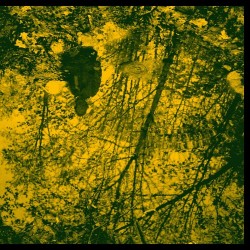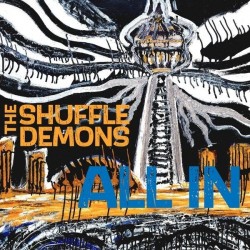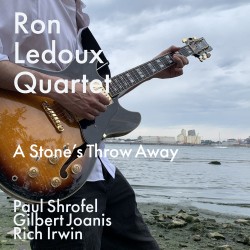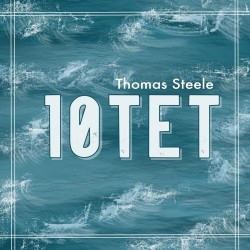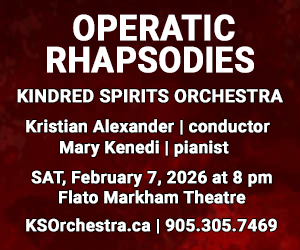When an idea of instruments associated with European high culture is broached, the violin, viola and cello instantly come into focus. But a lot has changed since the classical period. Contemporary notated music, and more emphatically, jazz and free music, has upset the paradigm for appropriate string sounds. As these sessions demonstrate creative music allows string players the freedom to play whatever and with whomever they choose.
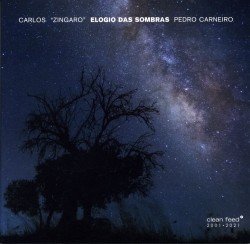 Violin and marimba are anything but conventional duo partners, but on Elogio Das Sombras (Clean Feed CF 583 CD cleanfeed-records.com) two Portuguese stylists, fiddler Carlos Zingaro and Pedro Carneiro, who play marimba with damper pedals, disregard the shibboleth. While the veteran Zingaro has moved among rock, jazz and free music, Carneiro has high art credentials, often playing with symphony orchestras. But the 11 tracks here are pure improv, rife with advanced techniques and tunings. They also rarely neglect nods to theme and melody. When the two are involved in intense cross-sound pollination on such tracks as Clarão and Luminescência it’s the unique dampened and hollow marimba patterns undulating with rosewood percussiveness that define the parameters. Still, building on the other instrument’s constant low-pitch resonations, Zingaro detours from unleashing staccato stops and skipping sweeps to direct the fragmented interface towards linear grooves. While some sequences may involve the pressure from string-screeching motifs or expose wooden bar thumps that sound as if they’re resonations from plastic milk bottles rather than tone bars, percussiveness and energetic sul tasto pulls are moderated into a global cooperative vision. A piece like the extended Luz presents unity at its most profound. Throughout, hollow bell-like echoes and multi-string pressure shake out into a dampened and designated exposition that climaxes with joint moderation.
Violin and marimba are anything but conventional duo partners, but on Elogio Das Sombras (Clean Feed CF 583 CD cleanfeed-records.com) two Portuguese stylists, fiddler Carlos Zingaro and Pedro Carneiro, who play marimba with damper pedals, disregard the shibboleth. While the veteran Zingaro has moved among rock, jazz and free music, Carneiro has high art credentials, often playing with symphony orchestras. But the 11 tracks here are pure improv, rife with advanced techniques and tunings. They also rarely neglect nods to theme and melody. When the two are involved in intense cross-sound pollination on such tracks as Clarão and Luminescência it’s the unique dampened and hollow marimba patterns undulating with rosewood percussiveness that define the parameters. Still, building on the other instrument’s constant low-pitch resonations, Zingaro detours from unleashing staccato stops and skipping sweeps to direct the fragmented interface towards linear grooves. While some sequences may involve the pressure from string-screeching motifs or expose wooden bar thumps that sound as if they’re resonations from plastic milk bottles rather than tone bars, percussiveness and energetic sul tasto pulls are moderated into a global cooperative vision. A piece like the extended Luz presents unity at its most profound. Throughout, hollow bell-like echoes and multi-string pressure shake out into a dampened and designated exposition that climaxes with joint moderation.
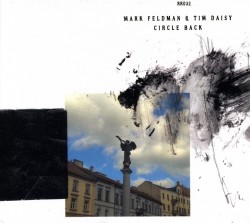 If balancing the timbres from violin and marimba appears quirky, imagine the challenges implicit when the improvisation involves a violin and a full drum kit. But that’s what transpires on Circle Back (Relay Recordings relay 032 timdaisyrelayrecords.bandcamp.com) during a live set by New York fiddler Mark Feldman and drummer Tim Daisy. The CD’s single improvisation starts off this side of conventional, but gets more atonal as it runs its course. Gifted with an ESP-like connection, Daisy and Feldman intuit each other’s next move before any note is sounded and come up with perfect timbral ripostes. Initially advancing in a straight-ahead manner, the violinist works in concise quotes from I Got Rhythm and later, Night In Tunisia, among the spiccato spawls and rounded stops which set up the exposition. For his part the drummer counters with cymbal clips, bass drum rumbles and persistent rim clipping. One-third of the way through however, the interchange heightens, with Feldman dynamically stroking several strings at once, sometimes both arco and pizzicato. As his string jittering starts creating on a strained, near-East European tone, Daisy’s sympathetic drum-top hand patting and hand claps anchor the duet. Transition comes a little past the halfway point however as the violinist’s spiccato swipes seesaw to squeaks so high-pitched that they reach a point above human hearing. Subtly, the tempo has also increased from moderato to presto, though with Daisy’s positioned clip-clops and rim shots keeping time. The violinist’s staccato dynamics finally meet up with the percussionist’s clock-ticking beats, with the brief coda signalled by Feldman’s single-string dobro-like plucks.
If balancing the timbres from violin and marimba appears quirky, imagine the challenges implicit when the improvisation involves a violin and a full drum kit. But that’s what transpires on Circle Back (Relay Recordings relay 032 timdaisyrelayrecords.bandcamp.com) during a live set by New York fiddler Mark Feldman and drummer Tim Daisy. The CD’s single improvisation starts off this side of conventional, but gets more atonal as it runs its course. Gifted with an ESP-like connection, Daisy and Feldman intuit each other’s next move before any note is sounded and come up with perfect timbral ripostes. Initially advancing in a straight-ahead manner, the violinist works in concise quotes from I Got Rhythm and later, Night In Tunisia, among the spiccato spawls and rounded stops which set up the exposition. For his part the drummer counters with cymbal clips, bass drum rumbles and persistent rim clipping. One-third of the way through however, the interchange heightens, with Feldman dynamically stroking several strings at once, sometimes both arco and pizzicato. As his string jittering starts creating on a strained, near-East European tone, Daisy’s sympathetic drum-top hand patting and hand claps anchor the duet. Transition comes a little past the halfway point however as the violinist’s spiccato swipes seesaw to squeaks so high-pitched that they reach a point above human hearing. Subtly, the tempo has also increased from moderato to presto, though with Daisy’s positioned clip-clops and rim shots keeping time. The violinist’s staccato dynamics finally meet up with the percussionist’s clock-ticking beats, with the brief coda signalled by Feldman’s single-string dobro-like plucks.
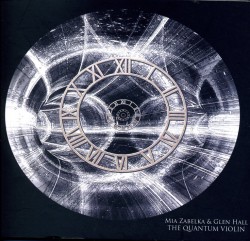 Acoustic timbres aren’t the only challenges which advanced string players face. On The Quantum Violin (FMR Records CD 622-0721 fmr-records.com)’s eponymously titled 14-track suite, Vienna’s Mia Zabelka adds electronic devices to her violin and joins Brampton’s Glen Hall, whose electronic trick bag includes all manner of synthesized, sampled and programmed tools to create the interaction. Maneuvering on a line that’s as thin as a single violin string, Zabelka and Hall manage to preserve humanity among the programming, which include OMax, CataRt, SPAT and other oscillations. Sometimes though, they find themselves falling headfirst into electronic miasma. That’s why it’s best not to hear these sound sequences as duets between acoustic instrument and electronics but as the performance of one sophisticated electroacoustic instrument. After all, the basis of much of the disc is the impulses initially created by the fiddle. The entire session is permeated with distant drones and percussive whooshes which move from foreground to background, as watery undercurrents become as prominent as vibrating segments. Yet except for brief twangs and faint swift glissandi, brittle violin tones are deconstructed to create varied parameters and treatments which meld on the overall sound canvas. Snatches of the violinist’s vocoder-synthesized voice are sometimes heard. But the only real vocal, is mumbled on The Quantum Violin #8 by author Kenji Siratori reading from his William S. Burroughs-influenced cut-up text, which is embedded within the overall metallic buzz. Tempos and transitions climax several times. For instance, rapidly speeding string sawing and pitch elevation isolate variances within the percussive drones that permeate The Quantum Violin #4 and The Quantum Violin #5, but are resolved by spiccato bounces and switches to varied speeds. Meanwhile, spidery string squawks work their way through a thickset of synthesized non-linear vibrations on The Quantum Violin #9 to blend with pre-recorded descending vocal warbles for additional textural polyphony. The brief, concluding The Quantum Violin #14 - For Pauline Oliveros, is proposed as a sonic summation. However, as the narrative blend crests and declines, the mixture between rounded metallic oscillations makes it more of an elevated culmination than a separate coda.
Acoustic timbres aren’t the only challenges which advanced string players face. On The Quantum Violin (FMR Records CD 622-0721 fmr-records.com)’s eponymously titled 14-track suite, Vienna’s Mia Zabelka adds electronic devices to her violin and joins Brampton’s Glen Hall, whose electronic trick bag includes all manner of synthesized, sampled and programmed tools to create the interaction. Maneuvering on a line that’s as thin as a single violin string, Zabelka and Hall manage to preserve humanity among the programming, which include OMax, CataRt, SPAT and other oscillations. Sometimes though, they find themselves falling headfirst into electronic miasma. That’s why it’s best not to hear these sound sequences as duets between acoustic instrument and electronics but as the performance of one sophisticated electroacoustic instrument. After all, the basis of much of the disc is the impulses initially created by the fiddle. The entire session is permeated with distant drones and percussive whooshes which move from foreground to background, as watery undercurrents become as prominent as vibrating segments. Yet except for brief twangs and faint swift glissandi, brittle violin tones are deconstructed to create varied parameters and treatments which meld on the overall sound canvas. Snatches of the violinist’s vocoder-synthesized voice are sometimes heard. But the only real vocal, is mumbled on The Quantum Violin #8 by author Kenji Siratori reading from his William S. Burroughs-influenced cut-up text, which is embedded within the overall metallic buzz. Tempos and transitions climax several times. For instance, rapidly speeding string sawing and pitch elevation isolate variances within the percussive drones that permeate The Quantum Violin #4 and The Quantum Violin #5, but are resolved by spiccato bounces and switches to varied speeds. Meanwhile, spidery string squawks work their way through a thickset of synthesized non-linear vibrations on The Quantum Violin #9 to blend with pre-recorded descending vocal warbles for additional textural polyphony. The brief, concluding The Quantum Violin #14 - For Pauline Oliveros, is proposed as a sonic summation. However, as the narrative blend crests and declines, the mixture between rounded metallic oscillations makes it more of an elevated culmination than a separate coda.
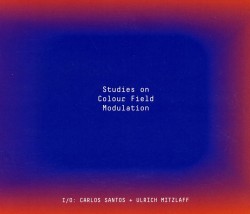 As inventively electroacoustic, but much less complex in execution is Studies on Colour Field Modulation (Creative Sources CS 708 CD creativesourcesrec.com) by the I/O duo of German cellist Ulrich Mitzlaff and Portuguese laptoppist Carlos Santos. Both also use so-called objects to add to the available textures. Blau, first of the CD’s two selections, confirms the noise-objects connection wrapping the laptop and cello in aluminum for increased playing turbulence. Simultaneously Mitzlaff’s sul tasto sawing and high-pitched swipes are often heard alongside thin voltage crackles and crinkles, although sounds hammered on the string or drawn from the hollow innards of the cello are most prominent. Santos’ voltage crackles are less affected, so that throughout concentrated drones, splatters and whooshes are present as cello strains reach the highest string extensions. A mini-climax at the halfway point adds auto horns, police sirens and crowd noises and movement into the mix. Subsumed by a romantic string interlude, the narrative then blends street sounds, strident string scratches and ring modulator-like echoes into a gradually swelling tonal crescendo and fade. Orange, the other track, is a rural contrast to the urban interface of Blau. With cello pitches projected prominently in an aviary affiliated mode at the top, it’s only by later turning to pressurized string stops that the expected qualities of Mitzlaff’s instrument are heard through the squiggling electronic drone that takes up the remainder of the sound field. Harmonic concordance of woody cello slices and accompanying electronic buzzes marks the finale.
As inventively electroacoustic, but much less complex in execution is Studies on Colour Field Modulation (Creative Sources CS 708 CD creativesourcesrec.com) by the I/O duo of German cellist Ulrich Mitzlaff and Portuguese laptoppist Carlos Santos. Both also use so-called objects to add to the available textures. Blau, first of the CD’s two selections, confirms the noise-objects connection wrapping the laptop and cello in aluminum for increased playing turbulence. Simultaneously Mitzlaff’s sul tasto sawing and high-pitched swipes are often heard alongside thin voltage crackles and crinkles, although sounds hammered on the string or drawn from the hollow innards of the cello are most prominent. Santos’ voltage crackles are less affected, so that throughout concentrated drones, splatters and whooshes are present as cello strains reach the highest string extensions. A mini-climax at the halfway point adds auto horns, police sirens and crowd noises and movement into the mix. Subsumed by a romantic string interlude, the narrative then blends street sounds, strident string scratches and ring modulator-like echoes into a gradually swelling tonal crescendo and fade. Orange, the other track, is a rural contrast to the urban interface of Blau. With cello pitches projected prominently in an aviary affiliated mode at the top, it’s only by later turning to pressurized string stops that the expected qualities of Mitzlaff’s instrument are heard through the squiggling electronic drone that takes up the remainder of the sound field. Harmonic concordance of woody cello slices and accompanying electronic buzzes marks the finale.
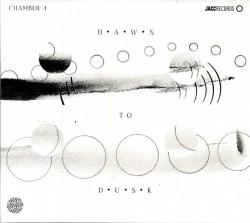 Pairing one string instrument with another instrument can be expanded to include more players as Dawn to Dusk (JACC Records JR044/TRICO 18 jacc-records.com) demonstrates during two long and one short fully improvised tracks. Working through connected or contrapuntal impulses are Portuguese players, acoustic guitarist Marcelo dos Reis and trumpeter Luís Vicente, and French ones, violinist Théo Ceccaldi and his brother, cellist Valentin. As Chamber 4, the quartet, especially the bowed strings, play traditionally as the trumpeter projects strained yelping breaths and the guitarist designates unexpected plucks. As string swabbing becomes more concentrated, a motorized drone is created. Soon the stops and strops from the cello and violin are joined by angled guitar-string clicks to create a squirming amoeba-like background for Vicente’s rugged triplets to slide up the scale in increments. Higher and speedier his portamento effects move, until a climax at the end of a brief interlude melds clunking cello string pressure and downwards guitar strums. Resolution comes in the concluding Dusk as the fiddle and trumpet lines coalesce with cello and guitar providing the clinking and clattering continuum. Finally, as the arco strings reach a crescendo of concentrated glissandi, they’re joined by tough guitar strums to frame half-valve trumpet smears until all descend to a moderated conclusion.
Pairing one string instrument with another instrument can be expanded to include more players as Dawn to Dusk (JACC Records JR044/TRICO 18 jacc-records.com) demonstrates during two long and one short fully improvised tracks. Working through connected or contrapuntal impulses are Portuguese players, acoustic guitarist Marcelo dos Reis and trumpeter Luís Vicente, and French ones, violinist Théo Ceccaldi and his brother, cellist Valentin. As Chamber 4, the quartet, especially the bowed strings, play traditionally as the trumpeter projects strained yelping breaths and the guitarist designates unexpected plucks. As string swabbing becomes more concentrated, a motorized drone is created. Soon the stops and strops from the cello and violin are joined by angled guitar-string clicks to create a squirming amoeba-like background for Vicente’s rugged triplets to slide up the scale in increments. Higher and speedier his portamento effects move, until a climax at the end of a brief interlude melds clunking cello string pressure and downwards guitar strums. Resolution comes in the concluding Dusk as the fiddle and trumpet lines coalesce with cello and guitar providing the clinking and clattering continuum. Finally, as the arco strings reach a crescendo of concentrated glissandi, they’re joined by tough guitar strums to frame half-valve trumpet smears until all descend to a moderated conclusion.
These sessions confirm that with the right ideas and sophisticated techniques any instrument can create creative music with any other, even ones as traditional as those in the European string family.
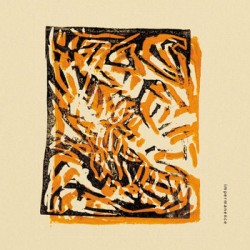 Impermanence
Impermanence

